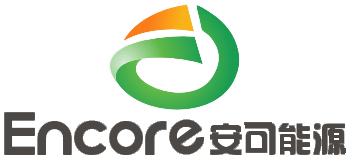- English
- Español
- Português
- русский
- Français
- 日本語
- Deutsch
- tiếng Việt
- Italiano
- Nederlands
- ภาษาไทย
- Polski
- 한국어
- Svenska
- magyar
- Malay
- বাংলা ভাষার
- Dansk
- Suomi
- हिन्दी
- Pilipino
- Türkçe
- Gaeilge
- العربية
- Indonesia
- Norsk
- تمل
- český
- ελληνικά
- український
- Javanese
- فارسی
- தமிழ்
- తెలుగు
- नेपाली
- Burmese
- български
- ລາວ
- Latine
- Қазақша
- Euskal
- Azərbaycan
- Slovenský jazyk
- Македонски
- Lietuvos
- Eesti Keel
- Română
- Slovenski
- मराठी
- Srpski језик
Common problems and solutions in the mixing process of lithium battery slurry
2023-12-22
Common problems and solutions in the mixing process of lithium battery slurry
In the manufacturing process of lithium batteries, slurry stirring is a very important process link. Slurry is usually a mixture of active substances (such as positive electrode materials, negative electrode materials), conductive agents, binders, and solvents. These raw materials are thoroughly and uniformly mixed through stirring to ensure the performance and stability of the battery.
1、 The general process flow of slurry mixing
(1) Process flow
1. Ingredients: First, prepare various raw materials, including positive electrode materials, negative electrode materials, conductive agents, adhesives, solvents, etc. According to the formula requirements, accurately weigh various raw materials.
2. Preparation of mixing tank: Clean the mixing tank thoroughly and ensure that the inside of the mixing tank is dry.
3. Feeding: According to the formula requirements, gradually add various raw materials into the mixing tank. Usually, the solvent is added first, and then other solid raw materials are gradually added.
4. Stirring: Start the mixing equipment and mix the raw materials. The stirring time and speed need to be determined based on specific formula and process requirements to ensure that the raw materials are fully and evenly mixed.
5. Exhaust: During the mixing process, bubbles or gases may be generated, and it is necessary to use appropriate exhaust devices to exhaust the bubbles to ensure the compactness of the slurry.
6. Quality inspection: After mixing is completed, samples are taken for quality inspection, including testing of the particle size, viscosity, uniformity and other indicators of the slurry.
7. Packaging/Storage: Packaging or storing the stirred pulp for future production use.
(2) Process considerations
Ensure the cleanliness and disinfection of the mixing equipment to prevent cross contamination.
Strictly follow the formula requirements for weighing and adding raw materials to avoid errors.
Control the mixing time and speed to ensure that the raw materials are fully and evenly mixed.
Conduct quality inspection on the mixed slurry to ensure compliance with product requirements.
2、 Common problems and solutions in the production process of battery paste
1). Batch dispersion process, long mixing and dispersion time, high energy consumption: Solution: Consider using continuous process mixing equipment, such as continuous stirring reactor or continuous fluid bed reactor, to reduce energy consumption and time.
2). The electrode powder material is added from the top of the planetary mixer, and dust is prone to flying and floating. Solution: Consider using a closed feeding system to reduce dust flying.
3). Mixing powder and liquid phase is prone to agglomeration: Solution: Use ultrasound or other non mechanical methods for dispersion to reduce the occurrence of agglomeration.
4). Materials are prone to residue on the lid, walls, and agitator blades of the planetary agitator, making cleaning operations difficult. Solution: Consider using materials that are easy to clean to make the agitator, or designing easily removable components for cleaning.
5). Air is prone to accumulate in the dispersion mixing tank, and the generation of bubbles affects the dispersion effect. Solution: Consider using mixing equipment under vacuum or inert gas atmosphere to reduce the generation of bubbles.
3、 Precautions
1). Ensure that the continuous operation of the equipment can meet the requirements of product quality and stability.
2). Ensure that the design of the closed system does not affect the smooth input of raw materials, and regularly clean the system to prevent blockages.
3). Ensure that the selected dispersion method does not have a negative impact on product quality.
4). When cleaning equipment, follow the correct operating procedures to ensure thorough cleaning and avoid cross contamination.
5). Ensure that equipment operations comply with safety standards and avoid the use of potentially hazardous gases.
4、 Summary
In the production process of battery slurry, continuous process mixing equipment, closed feeding system, non mechanical dispersion method, easy to clean equipment design, and gas control technology can effectively solve the current problems encountered. At the same time, operators need to receive relevant training to ensure the correct operation and maintenance of equipment, thereby improving production efficiency and product quality.



